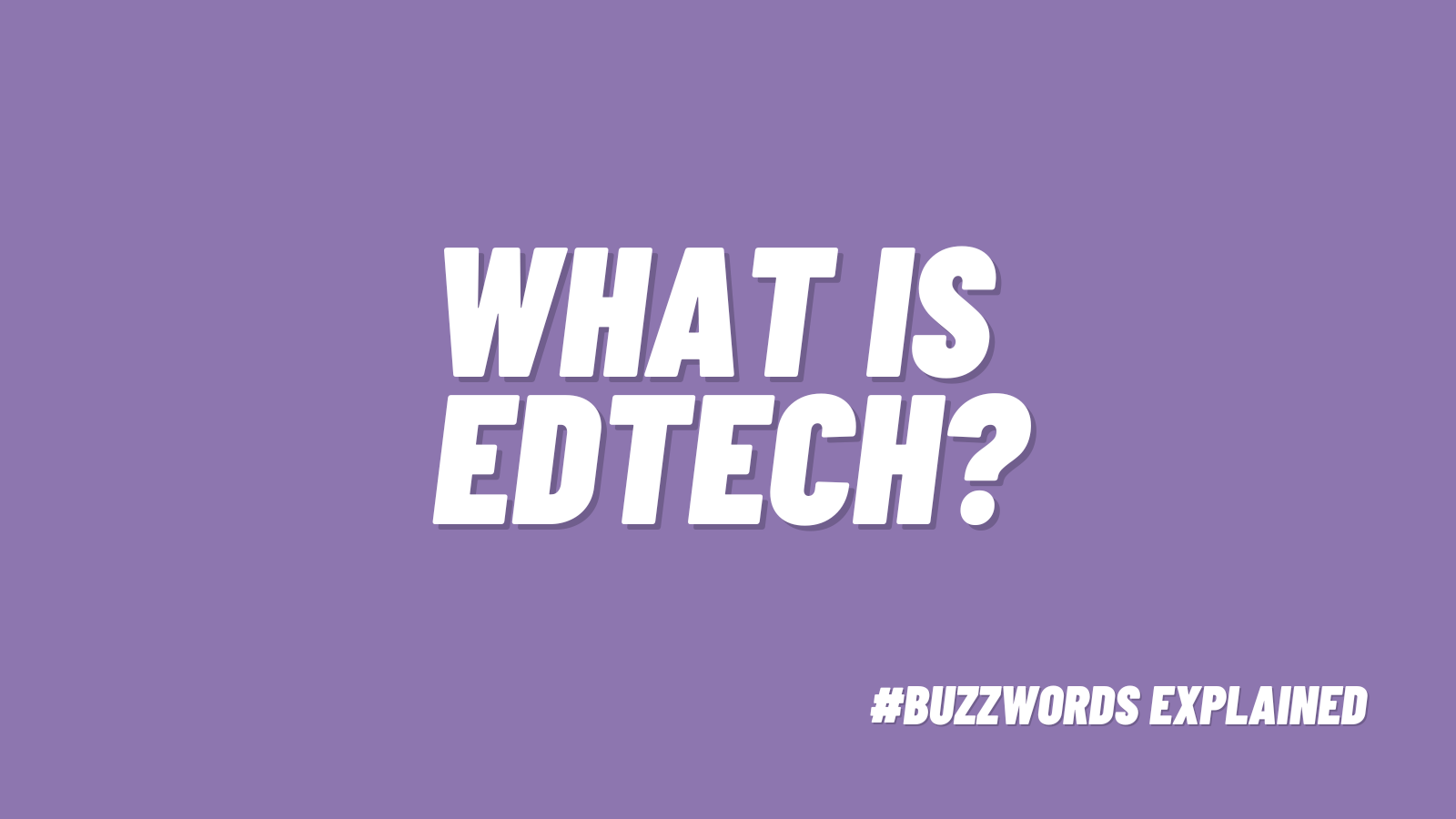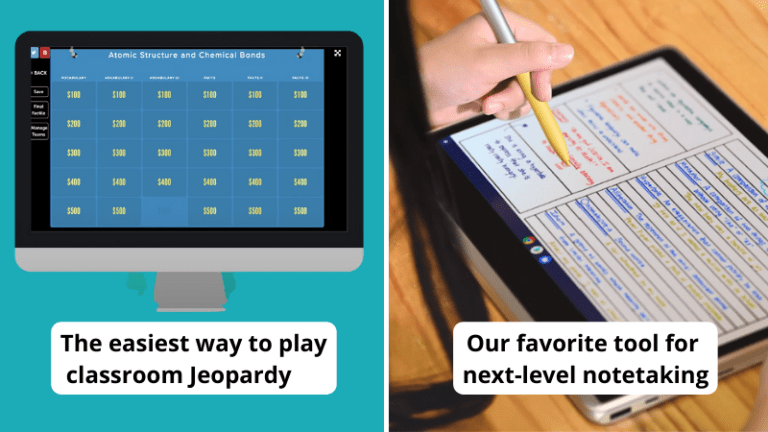Teachers today hear a lot about using edtech to help students learn. But what exactly is edtech, and why is it so important? Here are the answers to some common questions on the subject.
What is edtech?
Education technology, often shortened to edtech, combines computer hardware and software with the best educational theories and practices. Essentially, any time students, teachers, or schools use computers in some way to help them teach or learn, that’s edtech. It’s an enormous field, and one that’s growing in leaps and bounds each day. Nearly every classroom uses edtech in one way or another.
Edtech History
Edtech may feel like a modern thing, but it’s actually been around for centuries. The term “technology” refers to any tool created by the application of knowledge. (Chimpanzees who use sticks to “fish” for termites are using a form of technology.) Early edtech tools included items like the abacus, chalkboard, globe, map—even books are a type of edtech.
It wasn’t until the 20th century, though, that classrooms really started to see advances in educational technology. First, students and teachers benefited from items like mimeograph machines and typewriters. Then came overhead projectors, document cams, calculators, and filmstrip projectors.
In the 1980s, computers began to trickle into schools and classrooms. And when the internet became widely available in the late 1990s, edtech suddenly boomed into the massive field it’s become today. This field grows exponentially each year, as experts explore ways to advance learning with the latest technology available.
Find out more about the history of educational technology here.
Why is edtech important?
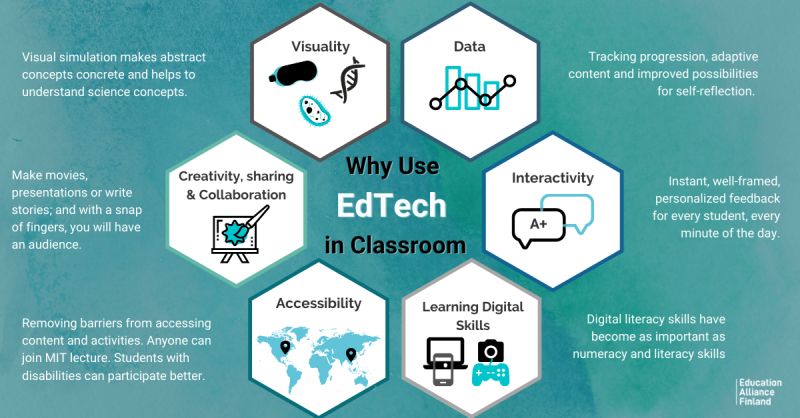
Why We Use EdTech/Education Alliance Finland via educationalliancefinland.com
The goal of quality educational technology is simple: to help all students find ways to learn that fit their needs and abilities. When used well, edtech is able to:
Empower all learners
Edtech provides opportunities to empower students who were often left behind in the past. For instance, text-to-speech tools open up whole new worlds for students with visual impairment. Differentiated adaptive learning software lets students learn at their own pace, providing extra help when they need it. And during the 2020 pandemic lockdown, millions of kids were able to continue learning in some way, even though they were stuck at home.
Provide necessary skills
Today’s students will need to be proficient in technology when it comes time for them to take their place in the workforce. Nearly every occupation today requires the use of tech tools in one way or another. To succeed, people of all ages must learn to be comfortable embracing new concepts, tools, and ideas.
Increase opportunities
Students today can take classes online in just about any subject, giving them opportunities that weren’t available before. Schools who embrace these tech advances provide their students with broader learning from educators who are experts in their fields. Students living in remote areas, or who need to learn from home, aren’t held back by their circumstances.
Simplify administrative tasks
Edtech has made the lives of teachers and school staff easier in so many ways. Whether it’s helping teachers take attendance and lunch count or collect permission slips, or providing administrators with useful data about student progress, technology can take care of the time-consuming minutiae and allow educators to do what they do best: help kids learn.
Encourage creativity and collaboration
New tools give learners new ways to demonstrate what they’ve learned, and encourage them to work together across the classroom, school, or even the world. This boosts student engagement too, which is one of the most important markers of a successful educational system. Many educators find that using new tech helps promote a growth mindset with their students as well. Explore 7 ways school leaders use technology to support student creativity.
What are some examples of edtech?
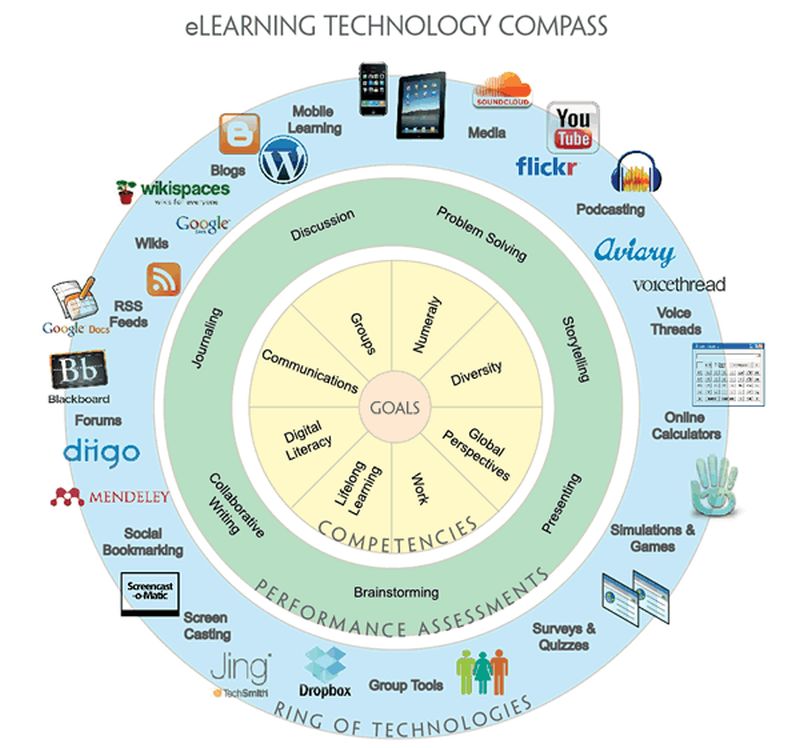
eLearning Technology Compass/eLearning Infographics via elearninginfographics.com
Education technology is a wide-ranging industry that includes both hardware and software. Here are some common edtech fields and examples of the products they create.
- Audiovisual technology: This field explores the way teachers deliver content to students. It includes things like interactive whiteboards, screencasting, and webcasting.
- Devices: This includes any electronic device used for learning. Many of the devices students and teachers use, like Chromebooks and iPads, are also used in the wider world. Edtech works to make these devices easier and safer for schools and students.
- Virtual learning spaces: From Zoom to Google Classroom, these are the tools teachers and students use to connect when they’re not together in person. Today’s students usually spend at least some of their school day in a virtual learning space, collaborating with teachers and other students.
- Educational software: This is a huge field. It includes learning programs like BrainPop or Amplify, as well as games and apps like Kahoot! and Duolingo.
- Learning management systems: These systems help educators manage student learning at individual and group levels. Examples include Canvas, Blackboard Inc., and Moodle.
- Assessment and data analysis: These edtech companies and tools allow educators to get a better picture of student progress. Thrive Assessments and Civitas Learning are good examples.
For more, explore 65 Edtech Companies Transforming the Way We Teach in 2023.
Are there any limitations to education technology?
While edtech is increasing opportunities and changing the way we teach and learn, we can’t rely on it for everything. Those who promote shiny new technology as a quick fix or a panacea for all ills aren’t seeing the full picture. Neither are those who worry that computers will replace teachers entirely.
Edtech tools are just that: tools. They’re one more way for teachers to reach students, to engage them and guide them through the learning process. Teachers must learn to use those tools effectively, because not every piece of edtech works equally well for every student or classroom. Tech coaches and IT specialists are some of the most valuable members of any school’s staff, helping educators learn to use new tech and troubleshooting problems.
But even the best ed technology can’t automatically fix underlying problems like discipline issues, lack of accountability, high student-teacher ratios, and poor culture and morale. Learn why edtech may be able to help tackle these problems, but it’s not an easy answer to everything.
How can teachers learn about and use edtech in their classrooms?
Since new education technology is popping up every day, how can teachers and educators possibly keep up-to-date? Aside from ensuring every school has tech coaches on staff, educators can read and follow edtech websites like Edutopia or Educators Technology. They can also learn about new tech in professional development courses and by attending education conferences.
At We Are Teachers, we’re always exploring new technology options for teachers, students, and schools. Bookmark our Technology page for regularly updated quality content like this:
- 14 Easy-To-Use Websites and Online Platforms for Student Assessment
- 10 Best Tech Tools To Grab Your Students’ Attention
- The 9 Best Online Tools for Student Collaboration
- 20+ Assistive Technology Examples To Help Students Learn
- Help! A Parent Won’t Let Their Kid Use Any Technology at All
- Where To Find the Best EdTech Jobs
Have more questions about edtech? Join the WeAreTeachers HELPLINE group on Facebook to chat with fellow educators and ask for advice.
Plus, 20 Ways Teachers Can Use ChatGPT To Make Their Lives Easier.
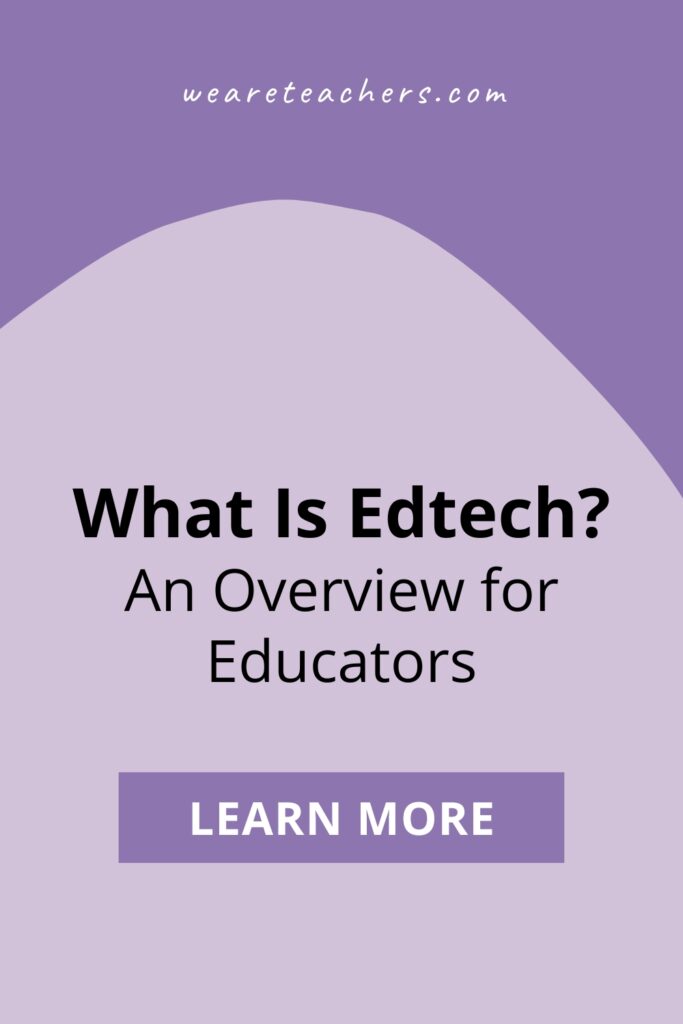
We Are Teachers
